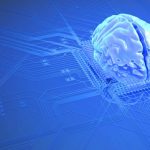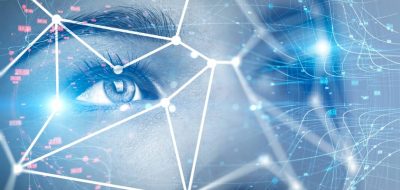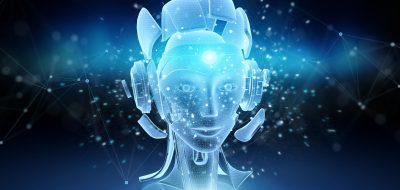My article in Data Driven Investor published 28th of March 2020 on Generation C. “C” for connected.
Nearly all of us today are connected to digital services. We are both the co-architects and consumers of digital reality. Technologies fascinate us, they are currently in fashion and sell well. Start-ups, digital and web apps are all trendy and cool. However, there is another face to digitization – the complex and often painful change of business organizations. What consequences of digitization should a modern company reckon with? What should it do to survive in a market swept by a digital revolution? Described below are some key elements one might want to consider in designing a digitization strategy.
The megatrend: enter generation C
A new generation is here, referred to as Gen C, with a “C” for connected. In 2020, a whole generation of people who will have spent their entire childhoods and youth in a fully digital world will come of age. The Internet, smartphones and social media are the only world they know. Their intimate familiarity with the latest technologies, their use of mobile devices for communication, their immersion in the network of family, friend and business colleague contacts substantially affects the way they consume goods and perform work.
In pondering the changes in business beyond performance indicators, one should carefully examine labor force demographics. Older generations may find it difficult to cope with digital processes and may need extra help dealing with change.
The main forces in the digital world
Digitization has reached a turning point. It is driven mainly by new consumers, new technologies and new businesses. They affect one another reinforcing all the processes involved in this megatrend in which digitization is key.
The new consumers. Generation C
Members of generation C are particularly well adjusted to living in the digital world. It is natural for them to believe they will be able to stay connected indefinitely. Two features distinguish their behavior: a propensity to share their privacy with others via social media and trust in other people’s opinions. They find members of their networks more trustworthy than the messages circulated by any brand. When contemplating a change in a business model, one should ensure greater transparency in business activities, recognize grass-roots consumer movements and appreciate the importance of social media in customer relations.
The new technologies
New technologies spread ever wider continually gaining momentum. The digital revolutionrelies on billions of consumers having access to broadband Internet which delivers global industry content to each of them within a split second. While access is cheap across all industries, cloud computing and information processing speeds grow exponentially. With information flowing between business units, consumers and businesses grow faster. It is therefore vital to speed up business processes and decision-making within companies. To make this happen, enterprises need to foster collaboration across their branches and build cross-functional teams.
The new economy
The benefits to be derived from digitization are real. An ever broader funding stream is available for business projects that begin with building their identities based on digital technology. Investors favor technologically innovative companies whose shares fetch premium prices at stock exchanges around the world.
Transparent strategy for victory
Business success in today’s changing world belongs to leaders capable of learning from market changes. If they live up to the challenge, their companies are bound to grow and defeat competition. Investment in new technologies will inevitably produce a return. The resulting profit may exceed that of the largest of today’s enterprises. Needless to say, business digitization entails certain trade-offs. Wrong choices carry risks that are potentially enormous. The key challenge for the businesses that are out not only to weather the storm but also ride the wave of the new megatrend is to formulate a clear digitization strategy. In its development, companies should identify the benefits and opportunities that the strategy is expected to bring and define the value chain that will emerge in the process.
This precisely was the aspiration of BMW in creating its two business units for digitization. Their job was to help the company achieve specific goals, which included completing the design, transport and finishing of automotive subcomponents within six days. The new units are responsible for ensuring efficient information flows. The approach works well for companies which adopt one or two global strategic objectives. With more objectives to handle or with objectives defined independently in the company’s multiple business units around the globe, the strategy may leave processes fragmented and units proliferating. BMW has reduced its strategy to the single aim of manufacturing the best cars in the world.
The key questions that companies should answer
In its article “Five questions every digital strategy should answer” written as early as 2014, Accenture noted that every digitization strategy should be customer-centric. But what if broader questions were asked? What if a company’s macro- and micro-environments were brought into the picture along with good will and business models? The questions then might look very different:
How will digitization influence the company’s current business model and its standing in the industry? How will digitization affect the competition?
How does one identify significant trends in the company’s industry and beyond? How will digitization affect them?
Which part of the company’s business model may be disrupted? What barriers may rise driven by the megatrend (digitization -> new consumers, new technology, new economy)? How can one prevent disruptions and barriers?
What should we do to become a leader in our field? How can digitization help us achieve this goal?
Key areas affected by digitization
A successful digitization strategy will take a company down a whole new path. The company may follow the megatrend and grow in one of its three aspects: its new business model, its new operational processes and its new space.
New business model
A company may base its new business model on complete connectedness with the digital ecosystem. Nearly 80 percent of successful start-ups have chosen to rely on cutting-edge IT. An astounding 50 percent of the start-ups that became market leaders have chosen a mobile technology as their centerpiece. Another viable option is to turn the company’s product into a service. An amazing 70+ percent of the Fortune 500 companies plan to offer their products as services by 2020. One can also be radically innovative and follow the example of the likes of Xiaomi and Uber. Such companies have made it big by adopting a novel approach to doing business.
New operational processes
A company may revamp all processes to generate major savings. For instance, a strategy of producing components on a 3D printer may reduce energy consumption by an incredible 40 to 60 percent as much of its transportation and logistics will no longer be needed. Equally enormous savings may result from discontinuing the production of costly equipment prototypes. Smart manufacturing software may speed up operations and cut operating expenses. Big data analytics may enable retailers to increase their revenues by a whopping 60 percent.
New virtual space
The labor market trend of “working any time, any place” is posed to cut demand for office space by double digit percentages in the nearest future. A company’s new strategy may be to gradually increase the share of work performed remotely by online workers. Such a growing virtual space will significantly reduce the company’s overhead and even cut working time for all employees.
Centralizing independent areas of digital innovation
In the world of business, centralization is often defined as placing all processes in the hands of a company’s executives. This path has been taken by Boeing where all digital technologies are managed by a single individual who decides about the latest technologies and IT processes. In the Commonwealth Bank of Australia, centralization meant setting up a business unit in charge of IT innovation and, subsequently, all digitization processes. This doesn’t necessarily have to result in killing all grass-roots and local initiatives. Frequently, the key to success lies in managing innovations locally. Every distinct structure such as a business unit or company branch is allowed to operate with full autonomy. Its prime objective is to maximize its own value rather than perform centrally assigned tasks. Nevertheless, in doing so, the unit or branch adheres to a central strategy and plan of developing digital resources. This very approach has been adopted by the media house News Corp, which relies on innovations unrolled by its local businesses. Although locally-managed, such businesses follow a common strategy and a common digital action plan.
So this can be done. Perhaps the best way out is to centralize and adhere to a common plan with independent areas. The examples cited above show it is possible and that the results are encouraging. Note also that there is no such thing as the single best digitization strategy model. Every company needs to adjust its changes to its specific profile and resource base. Some will embrace change sooner, others later. The question is whether to rush to beat the competition or wait and see to learn from the mistakes of others.
Link to this article
Related articles:
– Technology 2020. Algorithms in the cloud, food from printers and microscopes in our bodies
– Learn like a machine, if not harder
– Time we talked to our machines
– Will algorithms commit war crimes?
– Machine, when will you learn to make love to me?
– Hello. Are you still a human?










Andrzej44
we are doomed
John Accural
Nice. Connected gen rules 🙂
JackC
Nice article. Thank you for sharing
Jack23
Millenials are changing a lot in modern world. They have different expectations to boomers or gen x. This impacts from way we were to way we consume. Ultimately they can influence evolution of how our society works.
Oscar2
Good one. Is still the sharing economy gaining a momentum in the world traumatized by the coronavirus?
Zwierzak
Great read
AndrewJo
Every time information on this subject appears, it is worth reminding the precursor RaymondKurzweil. Thank you very much for this publication, here lies the biotechnology and AI.